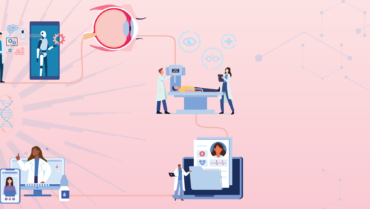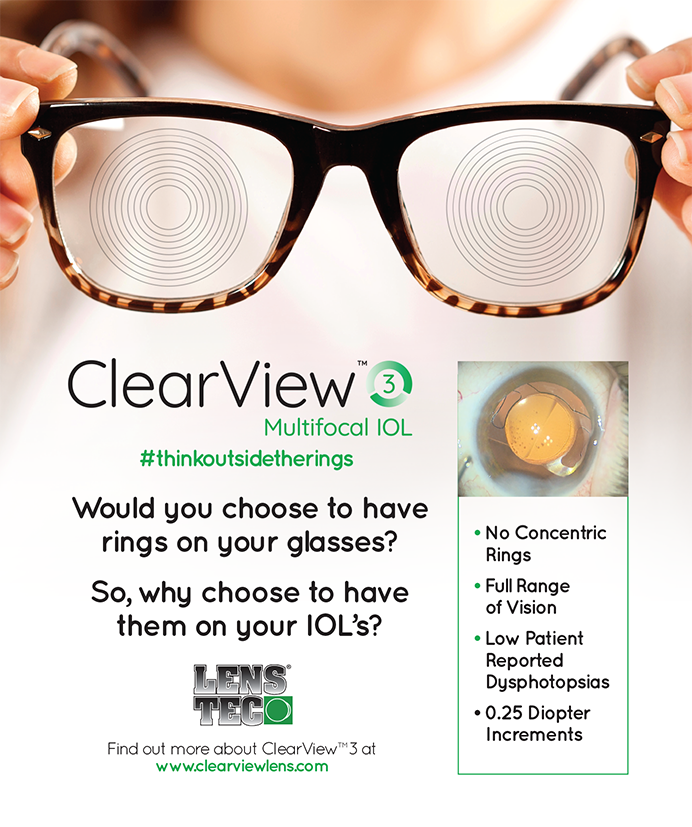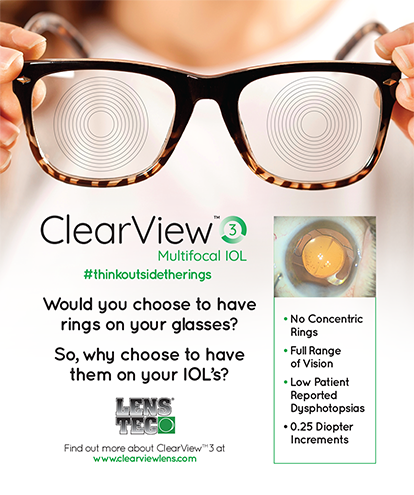
A lot of money has been spent to increase usage of electronic health record (EHR) systems. The Health Information Technology for Economic and Clinical Health Act of 2009 set aside $27 billion to encourage hospitals and providers to adopt EHRs. Most published reports suggest success.1 Adoption rates increased from 34% of physicians and 28% of hospitals in 2011 to 78% and 96%, respectively, in 2021.2 These statistics, however, fail to tell the whole story.
Specialists have been slower to adopt EHRs because most platforms are not tailored to their specific needs. Epic Systems accounts for the lion’s share of the specialist market, and 92,000 ambulatory health care providers use their software. eClinicalWorks and Modernizing Medicine follow with 33,044 and 3,202 specialist users, respectively.3
The frustration we ophthalmologists have with EHR systems arises from our sense that they could be far more helpful. There are several reasons why they fall short of our expectations.
A LAG IN TECHNOLOGY
Language. The most widespread programming language in health care IT is the Massachusetts General Hospital Utility Multiprogramming System, better known as MUMPS or M. Invented in the 1960s,4 the highly abbreviated, table-based coding language was designed to run on limited computing resources. For this reason, the code was intentionally sparse on comments that describe what a piece of code does. The result is that experienced MUMPS coders are unable to decipher what a block of code does without examining it carefully line by line.5 For anyone interested in more details, Robert Wachter, chairman of the department of medicine at the University of California, San Francisco, wrote a fascinating account of EHRs.6
Safety. I have often wondered why self-landing rocket boosters exist and AI-powered chatbots are available to us today, but their equivalents are off-limits to us in health care. One answer is regulation. Before strenuously complaining about that, it is worth recognizing that there is a lesson for us in the midair explosion of SpaceX’s Starship rocket in April: New technologies can and do fail.

Another tragic example of this comes from the Veterans Affairs health system. I was excited when Oracle, a hard-core database company and one of the largest software companies in the world, acquired EHR software giant Cerner this past year. I hoped the deal would inject modern programming know-how into health care IT. Oracle, as impressive as it is, has found it difficult to implement changes. In April, the Department of Veterans Affairs suspended the $16 billion rollout of the revamped Oracle Cerner EHR platform because the system was linked to “critical harm” incidents that resulted in the deaths of four veterans.7,8 The Veterans Health Administration’s current technology, however, the VistA, is showing its age (think Carter Administration) and requires modernization or replacement.9 The spotlight is on any large software company that takes on the massive challenges presented by health care IT. The difficulty is like one faced by companies developing self-driving software, where every failure makes headlines. As with health care IT, problems caused by existing systems do not make headlines. We again look to the next evolution in technology for answers.
AI AND VIRTUAL REALITY
I consulted ChatGPT (OpenAI) when writing this article, and the AI chatbot recommended that I touch on the following areas:
- Upcoming advances in telehealth;
- Wearable technology; and
- The use of blockchain to secure patient data for safe storage and transmission.
I expect that we will begin using AI chatbots to assist with writing patient information, support medical decision-making, and eventually help guard against errors in our notes.
I recently attended a virtual meeting of the Digital Ophthalmic Society (full disclosure: I am a board member). I sat next to colleagues in a virtual reality (VR) lecture theater and watched 3D surgical videos on a virtual screen from the comfort of my bedroom. The idea seemed kind of nerdy, even to me. Once I donned my VR headset, however, I was blown away. VR technology has become impressively refined. Patients are now able to take visual field tests using VR headsets with reliability comparable to the gold standard.
Advances in machine learning are rapidly improving the ability of AI to interpret ophthalmic images. This could enable us to diagnose ophthalmic conditions remotely.
The next generation of EHR systems must bring together the possibilities of all these incredible technologies. When EHR systems prove their safety and efficacy, even the toughest regulatory agencies should carve out a place for them. This will be like the inevitable turning point when self-driving cars become safer than humans—implementing new systems will become all but mandatory.
CONCLUSION
We cannot expect to have access to the most cutting-edge software technology for the practice of ophthalmology. The interest and involvement of the biggest software companies in health care IT and EHR systems could, however, shake things up. When implementation of the Oracle Cerner EHR system by the Department of Veterans Affairs restarts, it will serve as a litmus test for how established software giants can change the status quo. Alternatively, there is room for a scrappy startup company to disrupt things. May we have an Uber for health care IT, please?
1. Shilling B. The federal government has put billions into promoting electronic health record use: How is it going? The Commonwealth Fund. Accessed May 8, 2023. https://www.commonwealthfund.org/publications/newsletter-article/federal-government-has-put-billions-promoting-electronic-health
2. National Trends in Hospital and Physician Adoption of Electronic Health Records. The Office of the National Coordinator for Health Information Technology. Accessed May 8, 2023. https://www.healthit.gov/data/quickstats/national-trends-hospital-and-physician-adoption-electronic-health-records
3. Health Care Professional Health IT Developers. The Office of the National Coordinator for Health Information Technology. Accessed May 8, 2023. https://www.healthit.gov/data/quickstats/health-care-professional-health-it-developers
4. Greenes RA, Pappalardo AN, Marble CW, Barnett GO. Design and implementation of a clinical data management system. Comput Biomed Res. 1969;2(5):469-485.
5. MUMPS. Wikipedia. Accessed May 8, 2023. https://en.wikipedia.org/wiki/MUMPS#Overview
6. Pause on Oracle Cerner Electronic Health Record (EHR) Rollout. US Department of Veterans Affairs. April 7, 2023. Accessed May 8, 2023. https://www.va.gov/saginaw-health-care/news-releases/pause-on-oracle-cerner-electronic-health-record-ehr-rollout
7. Rodriguez S. VA admits Oracle Cerner EHRM issues contributed to 4 veteran deaths. March 21, 2023. Accessed May 8, 2023. https://ehrintelligence.com/news/va-admits-oracle-cerner-ehrm-issues-contributed-to-4-veteran-deaths
8. Wachter R. The Digital Doctor: Hope, Hype, and Harm at the Dawn of Medicine’s Computer Age. McGraw-Hill Education; 2017.
9. Glueck K. Veterans deserve better than VistA. Oracle. February 3, 2023. Accessed May 16, 2023. https://www.oracle.com/news/announcement/blog/veterans-deserve-better-than-vista-2023-02-03/




